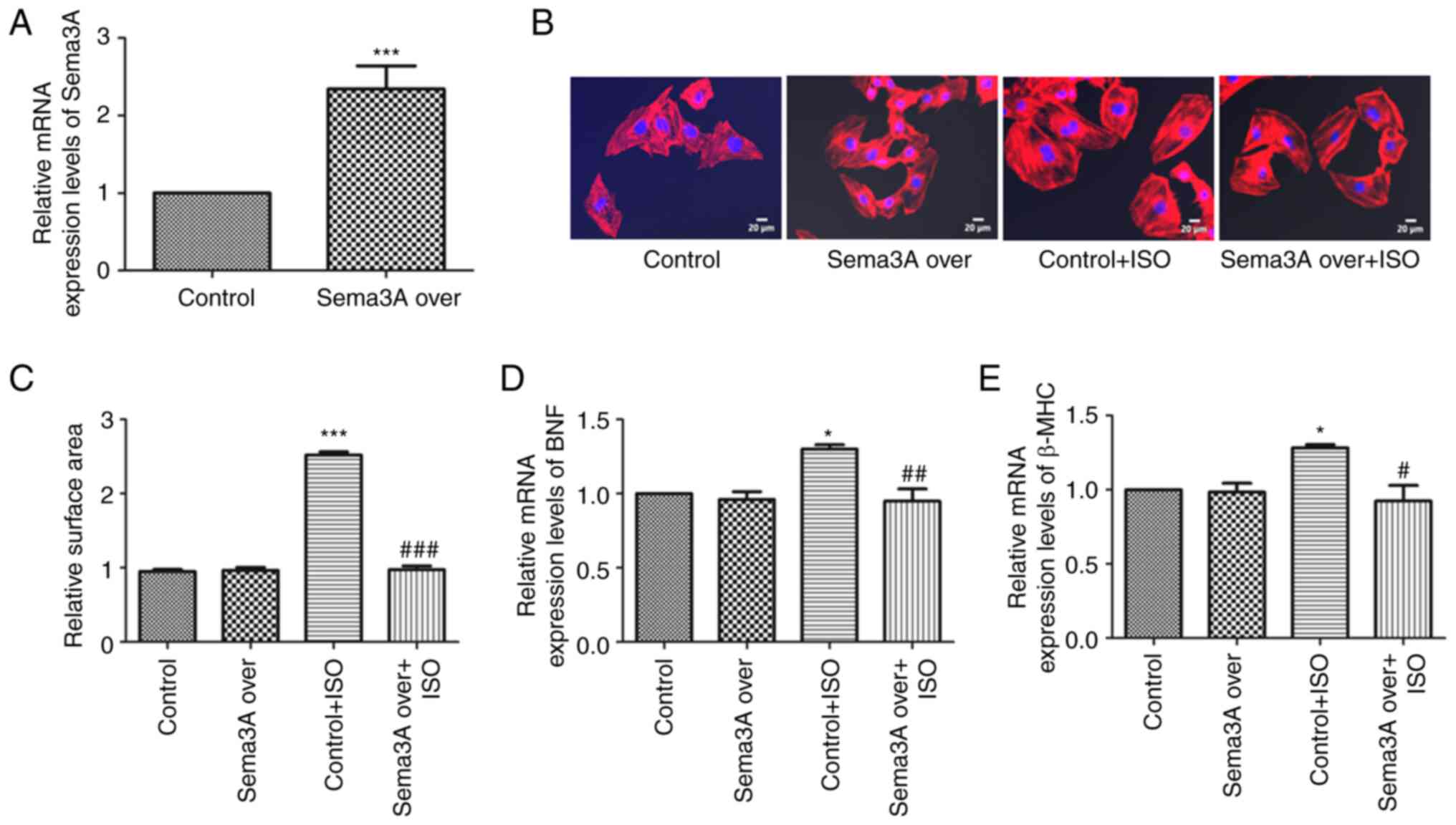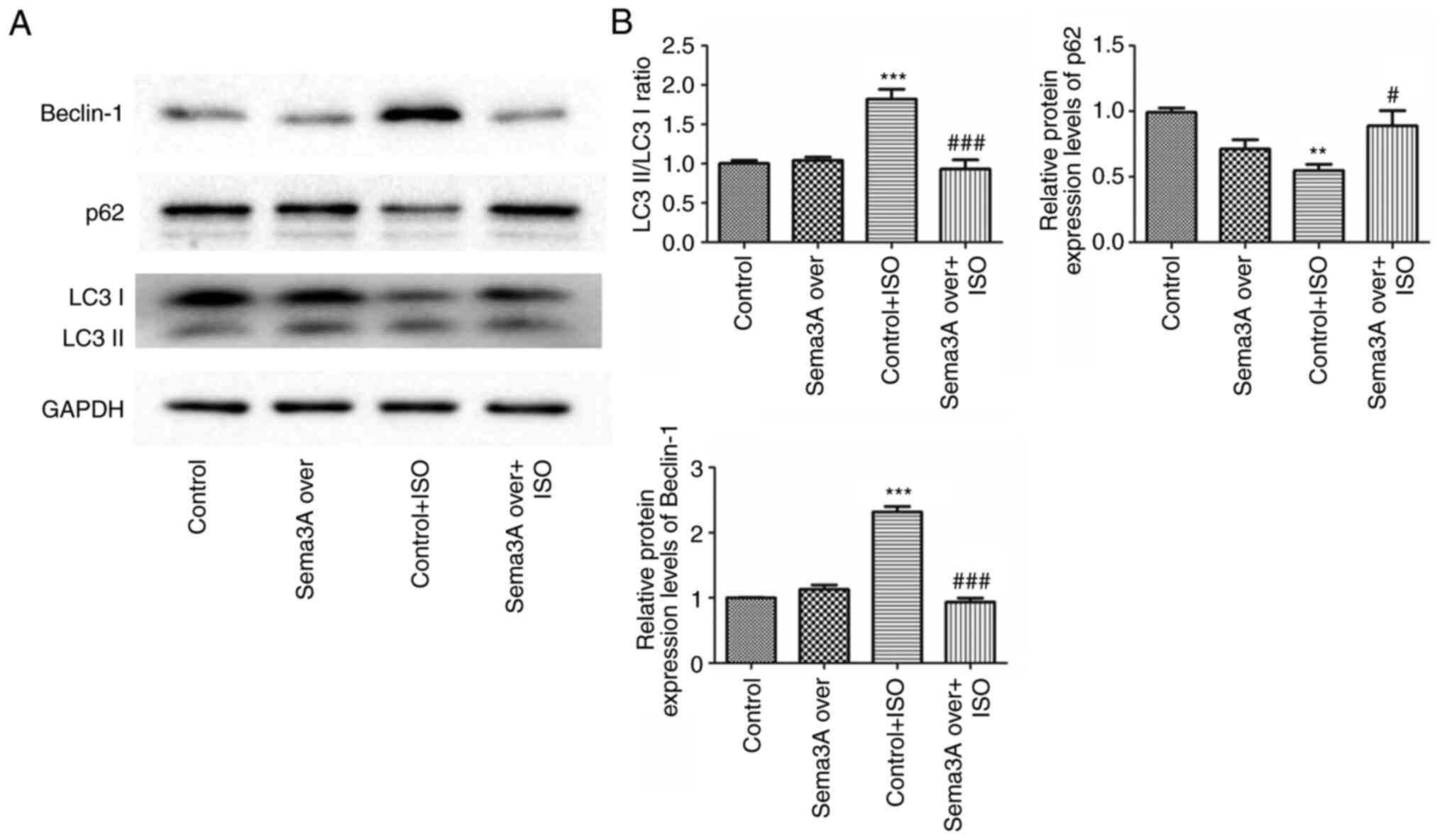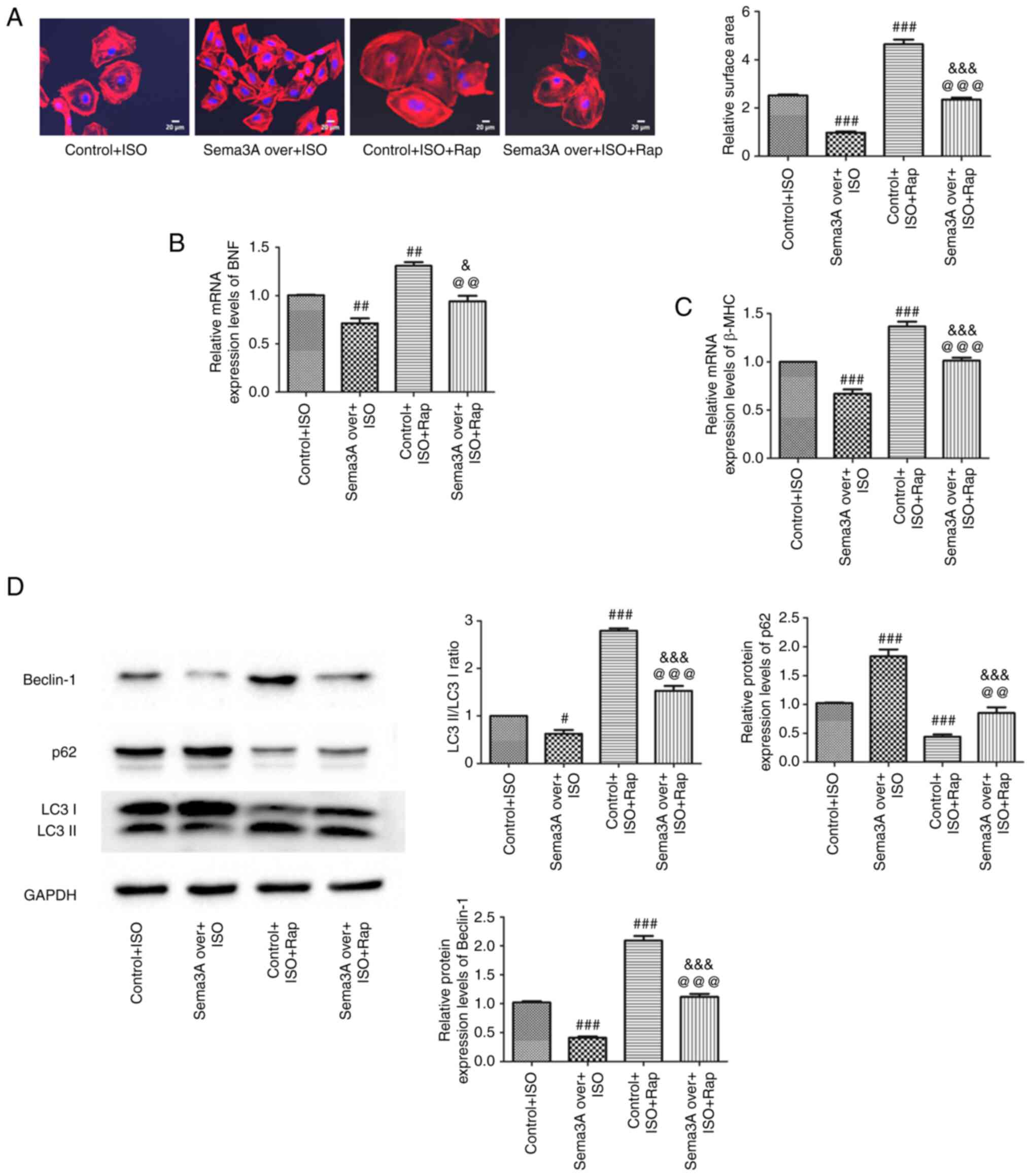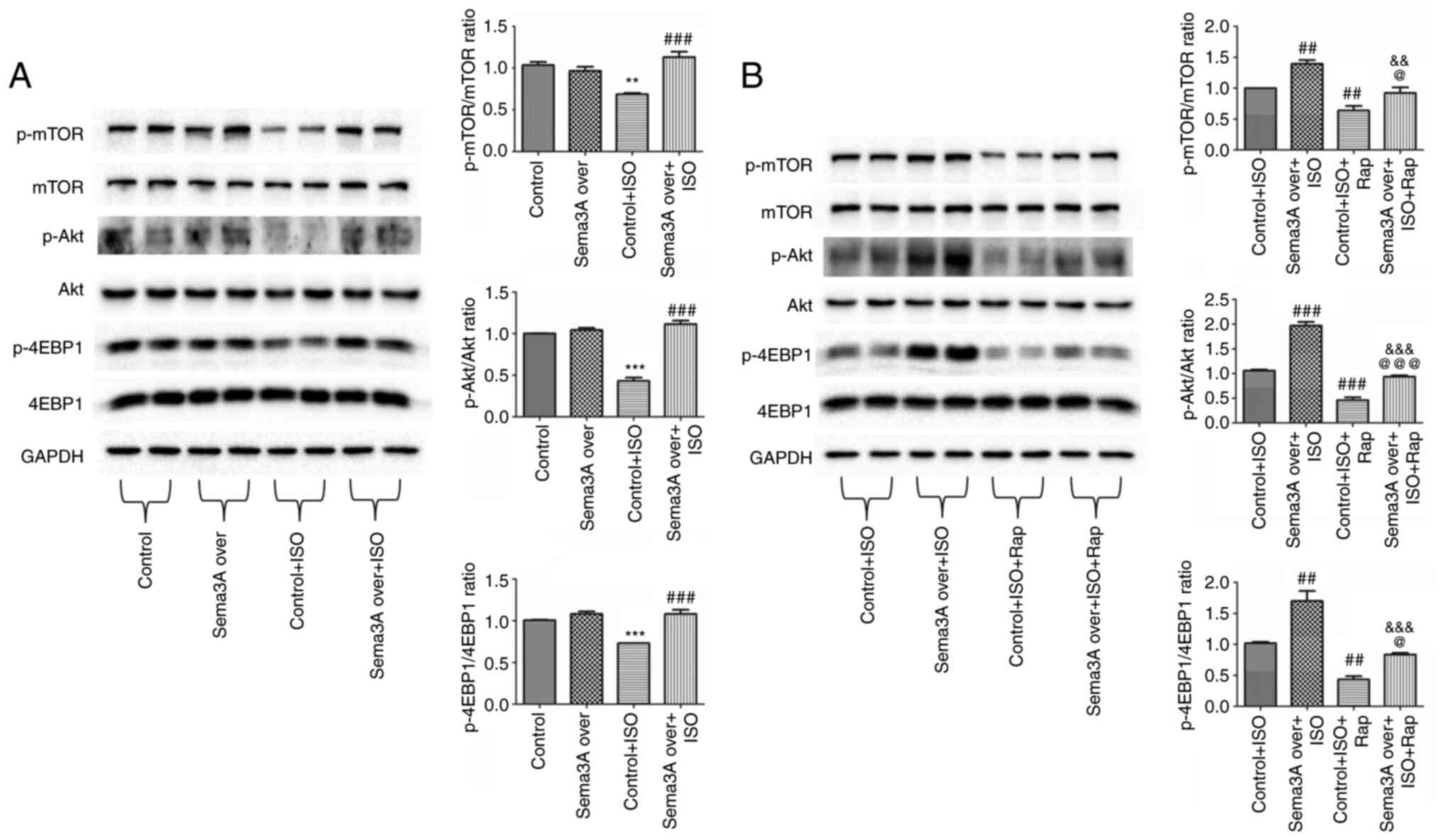|
1
|
Haque Z and Wang D: How cardiomyocytes
sense pathophysiological stresses for cardiac remodeling. Cell Mol
Life Sci. 4:983–1000. 2017.PubMed/NCBI View Article : Google Scholar
|
|
2
|
Qin W, Du N, Zhang L, Wu X, Hu Y, Li X,
Shen N, Li Y, Yang B, Xu C, et al: Genistein alleviates pressure
overload-induced cardiac dysfunction and interstitial fibrosis in
mice. Br J Pharmacol. 172:5559–5572. 2015.PubMed/NCBI View Article : Google Scholar
|
|
3
|
Ma ZG, Dai J, Zhang WB, Yuan Y, Liao HH,
Zhang N, Bian ZY and Tang QZ: Protection against cardiac
hypertrophy by geniposide involves the GLP-1 receptor/AMPKα
signalling pathway. Br J Pharmacol. 173:1502–1516. 2016.PubMed/NCBI View Article : Google Scholar
|
|
4
|
Fan W, Zhang B, Wu C, Wu H, Wu J, Wu S,
Zhang J, Yang X, Yang L, Hu Z and Wu X: Plantago asiatica L. seeds
extract protects against cardiomyocyte injury in
isoproterenol-induced cardiac hypertrophy by inhibiting excessive
autophagy and apoptosis in mice. Phytomedicine.
91(153681)2021.PubMed/NCBI View Article : Google Scholar
|
|
5
|
Wu QQ, Xiao Y, Yuan Y, Ma ZG, Liao HH, Liu
C, Zhu JX, Yang Z, Deng W and Tang QZ: Mechanisms contributing to
cardiac remodelling. Clin Sci (Lond). 131:2319–2345.
2017.PubMed/NCBI View Article : Google Scholar
|
|
6
|
Wang EY, Biala AK, Gordon JW and
Kirshenbaum LA: Autophagy in the heart: Too much of a good thing? J
Cardiovasc Pharmacol. 60:110–117. 2012.PubMed/NCBI View Article : Google Scholar
|
|
7
|
Rifki OF and Hill JA: Cardiac autophagy:
Good with the bad. J Cardiovasc Pharmacol. 60:248–252.
2012.PubMed/NCBI View Article : Google Scholar
|
|
8
|
Tamagnone L, Artigiani S, Chen H, He Z,
Ming GI, Song H, Chedotal A, Winberg ML, Goodman CS, Poo M, et al:
Plexins are a large family of receptors for transmembrane,
secreted, and GPI-anchored semaphorins in vertebrates. Cell.
99:71–80. 1999.PubMed/NCBI View Article : Google Scholar
|
|
9
|
Soker S, Miao HQ, Nomi M, Takashima S and
Klagsbrun M: VEGF165 mediates formation of complexes containing
VEGFR-2 and neuropilin-1 that enhance VEGF165-receptor binding. J
Cell Biochem. 85:357–368. 2002.PubMed/NCBI View Article : Google Scholar
|
|
10
|
Bagnard D, Vaillant C, Khuth ST, Dufay N,
Lohrum M, Puschel AW, Belin MF, Bolz J and Thomasset N: Semaphorin
3A-vascular endothelial growth factor165 balance mediates migration
and apoptosis of neural progenitor cells by the recruitment of
shared receptor. Neurosci. 21:3332–3341. 2001.PubMed/NCBI View Article : Google Scholar
|
|
11
|
Neufeld G, Cohen T, Shraga N, Lange T,
Kessler O and Herzog Y: The neuropilins: Multifunctional semaphorin
and VEGF receptors that modulate axon guidance and angiogenesis.
Trends Cardiovasc Med. 12:13–79. 2002.PubMed/NCBI View Article : Google Scholar
|
|
12
|
He Z and Tessier-Lavigne M: Neuropilin is
a receptor for the axonal chemorepellent Semaphorin III. Cell.
90:739–751. 1997.PubMed/NCBI View Article : Google Scholar
|
|
13
|
Chen RH, Li YG, Jiao KL, Zhang PP, Sun Y,
Zhang LP, Fong XF, Li W and Yu Y: Overexpression of Sema3a in
myocardial infarction border zone decreases vulnerability of
ventricular tachycardia post-myocardial infarction in rats. J Cell
Mol Med. 17:608–616. 2013.PubMed/NCBI View Article : Google Scholar
|
|
14
|
Rienks M, Carai P, Bitsch N, Schellings M,
Vanhaverbeke M, Verjans J, Cuijpers I, Heymans S and Papageorgiou
A: Sema3A promotes the resolution of cardiac inflammation after
myocardial infarction. Basic Res Cardiol. 112(42)2017.PubMed/NCBI View Article : Google Scholar
|
|
15
|
Livak KJ and Schmittgen TD: Analysis of
relative gene expression data using real-time quantitative PCR and
the 2(-Delta Delta C(T)) method. Methods. 25:402–408.
2001.PubMed/NCBI View Article : Google Scholar
|
|
16
|
Balakumar P and Jagadeesh G: Multifarious
molecular signaling cascades of cardiac hypertrophy: Can the muddy
waters be cleared? Pharmacol Res. 62:365–383. 2010.PubMed/NCBI View Article : Google Scholar
|
|
17
|
McKinsey TA and Kass DA: Small-molecule
therapies for cardiac hypertrophy: Moving beneath the cell surface.
Nat Rev Drug Discov. 6:617–635. 2007.PubMed/NCBI View
Article : Google Scholar
|
|
18
|
Liu X, Zhou N, Sui X, Pei Y, Liang Z and
Hao S: Hrd1 induces cardiomyocyte apoptosis via regulating the
degradation of IGF-1R by sema3a. Biochim Biophys Acta Mol Basis
Dis. 1864:3615–3622. 2018.PubMed/NCBI View Article : Google Scholar
|
|
19
|
Zhao C, Liu J, Zhang M and Wu Y:
Semaphorin 3A deficiency improves hypoxia-induced myocardial injury
via resisting inflammation and cardiomyocytes apoptosis. Cell Mol
Biol (Noisy-le-grand). 62:8–14. 2016.PubMed/NCBI
|
|
20
|
Ieda M, Kanazawa H, Kimura K, Hattori F,
Ieda Y, Taniguchi M, Lee JK, Matsumura K, Tomita Y, Miyoshi S, et
al: Sema3a maintains normal heart rhythm through sympathetic
innervation patterning. Nat Med. 13:604–612. 2007.PubMed/NCBI View
Article : Google Scholar
|
|
21
|
Wen HZ, Jiang H, Li L, Xie P, Li JY, Lu ZB
and He B: Semaphorin 3A attenuates electrical remodeling at infarct
border zones in rats after myocardial infarction. Tohoku J Exp Med.
225:51–57. 2011.PubMed/NCBI View Article : Google Scholar
|
|
22
|
Levine B and Kroemer G: Autophagy in the
pathogenesis of disease. Cell. 132:27–42. 2008.PubMed/NCBI View Article : Google Scholar
|
|
23
|
Sagrillo-Fagundes L, Bienvenue-Pariseault
J and Vaillancourt C: Melatonin: The smart molecule that
differentially modulates autophagy in tumor and normal placental
cells. PLoS One. 14(e0202458)2019.PubMed/NCBI View Article : Google Scholar
|
|
24
|
Esteves AR, Palma AM, Gomes R, Santos D,
Silva DF and Cardoso SM: Acetylation as a major determinant to
microtubule-dependent autophagy: Relevance to Alzheimer's and
Parkinson disease pathology. Biochim Biophys Acta Mol Basis Dis.
1865:2008–2023. 2019.PubMed/NCBI View Article : Google Scholar
|
|
25
|
Nemchenko A, Chiong M, Turer A, Lavandero
S and Hill JA: Autophagy as a therapeutic target in cardiovascular
disease. J Mol Cell Cardiol. 51:584–593. 2011.PubMed/NCBI View Article : Google Scholar
|
|
26
|
Nakai A, Yamaguchi O, Takeda T, Higuchi Y,
Hikoso S, Taniike M, Omiya S, Mizote I, Matsumura Y, Asahi M, et
al: The role of autophagy in cardiomyocytes in the basal state and
in response to hemodynamic stress. Nat Med. 13:619–624.
2007.PubMed/NCBI View
Article : Google Scholar
|
|
27
|
Xu X and Ren J: Unmasking the janus faces
of autophagy in obesity-associated insulin resistance and cardiac
dysfunction. Clin Exp Pharmacol Physiol. 39:200–208.
2012.PubMed/NCBI View Article : Google Scholar
|
|
28
|
Liu L, Wang C, Sun D, Jiang S, Li H, Zhang
W, Zhao Y, Xi Y, Shi S, Lu F, et al: Calhex231
ameliorates cardiac hypertrophy by inhibiting cellular autophagy in
vivo and in vitro. Cell Physiol Biochem. 36:1597–1612.
2015.PubMed/NCBI View Article : Google Scholar
|
|
29
|
Kabeya Y, Mizushima N, Ueno T, Yamamoto A,
Kirisako T, Noda T, Kominami E, Ohsumi Y and Yoshimori T: LC3, a
mammalian homologue of yeast Apg8p, is localized in autophagosome
membranes after processing. EMBO J. 19:5720–5728. 2000.PubMed/NCBI View Article : Google Scholar
|
|
30
|
Tukaj C: The significance of
macroautophagy in health and disease. Folia Morphol (Warsz).
72:87–93. 2013.PubMed/NCBI View Article : Google Scholar
|
|
31
|
Pankiv S, Clausen TH, Lamark T, Brech A,
Bruun JA, Outzen H, Øvervatn A, Bjørkøy G and Johansen T:
p62/SQSTM1 binds directly to Atg8/LC3 to facilitate degradation of
ubiquitinated protein aggregates by autophagy. J Biol Chem.
282:24131–24145. 2007.PubMed/NCBI View Article : Google Scholar
|
|
32
|
Xu X, Hua Y, Nair S, Bucala R and Ren J:
Macrophage migration inhibitory factor deletion exacerbates
pressure overload-induced cardiac hypertrophy through mitigating
autophagy. Hypertension. 63:490–499. 2014.PubMed/NCBI View Article : Google Scholar
|
|
33
|
McMullen JR, Sherwood MC, Tarnavski O,
Zhang L, Dorfman AL, Shioi T and Izumo S: Inhibition of mTOR
signaling with rapamycin regresses established cardiac hypertrophy
induced by pressure overload. Circulation. 109:3050–3055.
2004.PubMed/NCBI View Article : Google Scholar
|
|
34
|
Zhu H, Tannous P, Johnstone JL, Kong Y,
Shelton JM, Richardson JA, Le V, Levine B, Rothermel BA and Hill
JA: Cardiac autophagy is a maladaptive response to hemodynamic
stress. J Clin Invest. 117:1782–1793. 2007.PubMed/NCBI View
Article : Google Scholar
|
|
35
|
Qi H, Ren J, Ba L, Song C, Zhang Q, Cao Y,
Shi P, Fu B, Liu Y and Sun H: MSTN attenuates cardiac hypertrophy
through inhibition of excessive cardiac autophagy by blocking AMPK
/mTOR and miR-128/PPARγ/NF-κB. Mol Ther Nucleic Acids. 19:507–522.
2020.PubMed/NCBI View Article : Google Scholar
|
|
36
|
Fan C, Tang X, Ye M, Zhu G, Dai Y, Yao Z
and Yao X: Qi-Li-Qiang-Xin alleviates isoproterenol-induced
myocardial injury by inhibiting excessive autophagy via
activating AKT/mTOR pathway. Front Pharmacol.
10(1329)2019.PubMed/NCBI View Article : Google Scholar
|
|
37
|
Li L, Xu J, He L, Peng L, Zhong Q, Chen L
and Jiang Z: The role of autophagy in cardiac hypertrophy. Acta
Biochim Biophys Sin (Shanghai). 48:491–500. 2016.PubMed/NCBI View Article : Google Scholar
|
|
38
|
Chen L, Liu P, Feng X and Ma C:
Salidroside suppressing LPS induced myocardial injury by inhibiting
ROS-mediated PI3K/Akt/mTOR pathway in vitro and in vivo. J Cell Mol
Med. 21:3178–3189. 2017.PubMed/NCBI View Article : Google Scholar
|
|
39
|
Tang ZB, Lei Y and Zhang XS: Vitexin
mitigates myocardial ischemia reperfusion-induced damage by
inhibiting excessive autophagy to suppress apoptosis via the
PI3K/Akt/mTOR signaling cascade. RSC Adv. 7:56406–56416. 2017.
|
|
40
|
Wang H, Wang H, Liang EY, Zhou LX, Dong
ZL, Liang P, Weng QF and Yang M: Thrombopoietin protects H9C2 cells
from excessive autophagy and apoptosis in doxorubicin-induced
cardiotoxicity. Oncol Lett. 15:839–848. 2017.PubMed/NCBI View Article : Google Scholar
|


















